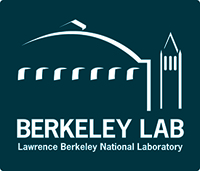Currently, one of the leading methods for creating qubits in materials involves exploiting the structural atomic defects in diamond. But several researchers at the University of Chicago and Argonne National Laboratory believe that if an analogue defect could be engineered into a less expensive material, the cost of manufacturing quantum technologies could be significantly reduced. Using supercomputers at the National Energy Research Scientific Computing Center (NERSC), which is located at the Lawrence Berkeley National Laboratory (Berkeley Lab), these researchers have identified a possible candidate in aluminum nitride. Their findings were published in Nature Scientific Reports.
“Silicon semiconductors are reaching their physical limits—it’ll probably happen within the next five to 10 years—but if we can implement qubits into semiconductors, we will be able to move beyond silicon,” says Hosung Seo, University of Chicago Postdoctoral Researcher and a first author of the paper.
“Our community has been looking at diamond for some time, but it is interesting to study a less expensive material; our motivation is to find a practical and affordable replacement for silicon in semiconductors. Aluminum nitride is a perfect candidate because it is much cheaper than diamond and there are a number of technologies that can be developed starting from aluminum nitride wafers,” says Marco Govoni, Postdoctoral Researcher at the University of Chicago and Argonne National Laboratory. He is also a co-author of the paper.
In addition to Seo and Govoni, Giulia Galli is also a co-author on the paper. Galli is Liew Family Professor in Electronic Structure and Simulations at the University of Chicago’s Institute for Molecular Engineering.
The Strange World of Quantum Bits
Quantum mechanics describes the laws of nature on the scale of individual atoms, nuclei and electrons. At the quantum scale, physics gets strange. Take for example quantum entanglement: this occurs when pairs or groups of particles interact in such a way that the state of each particle cannot be described individually, instead the state must be described for the system as a whole. In other words, entangled particles act as a unit.
Another peculiar phenomenon of quantum mechanics is superposition, which occurs when two quantum states are added together to make another valid quantum state. So whereas a conventional computer bit encodes information as either zero or one, a qubit can be zero, one, or superposition of states (both zero and one at the same time). And, if these qubits could be linked or entangled in a quantum computer, problems that cannot be solved today with conventional computers could be tackled.
Today, one of the most promising solid-state qubits is created when a nitrogen atom occupies a place near a vacant site in a diamond’s carbon lattice; this defect is called a nitrogen-vacancy center in diamond. The presence of nitrogen is actually what gives the diamond its yellowish tint.
Using NERSC’s Edison supercomputer, the researchers found that by applying strain to aluminum nitride, one could create structural defects that may be harnessed as qubits similar to the one seen in diamond. Their calculations were performed using different levels of theory and the WEST code developed at the University of Chicago by Govoni, Galli and other researchers in Galli group.
“The WEST code allowed us to accurately predict the position of the defect levels in the band-gap of semiconductors,” says Seo. “Ideally, we want to have defect levels in the middle of the band-gap of materials because this means that that the defect’s electronic structure is well isolated from that of the host material. This is important for the qubit’s stability, to avoid de-coherence”
“We couldn’t have done this work without NERSC resources. In order to simulate these quantum defects you also need to accurately simulate the surrounding environment—this requires a lot of computational power,” says Govoni. “Basically you have a lot of atoms and a lot of electrons, and then in the middle of your simulation there is a defect which is the one you want to focus on, but it interacts with all the rest.”
The next step for Seo, Govoni and Galli is to work with experimentalists to see if their theoretical predictions can be confirmed in a laboratory. This research was supported by the Materials Research Science and Engineering Center (MRSEC) at the University of Chicago, which receives funding from the National Science Foundation (NSF), and by Department of Energy’s (DOE) Office of Science. NERSC is a DOE Office of Science User Facility.
